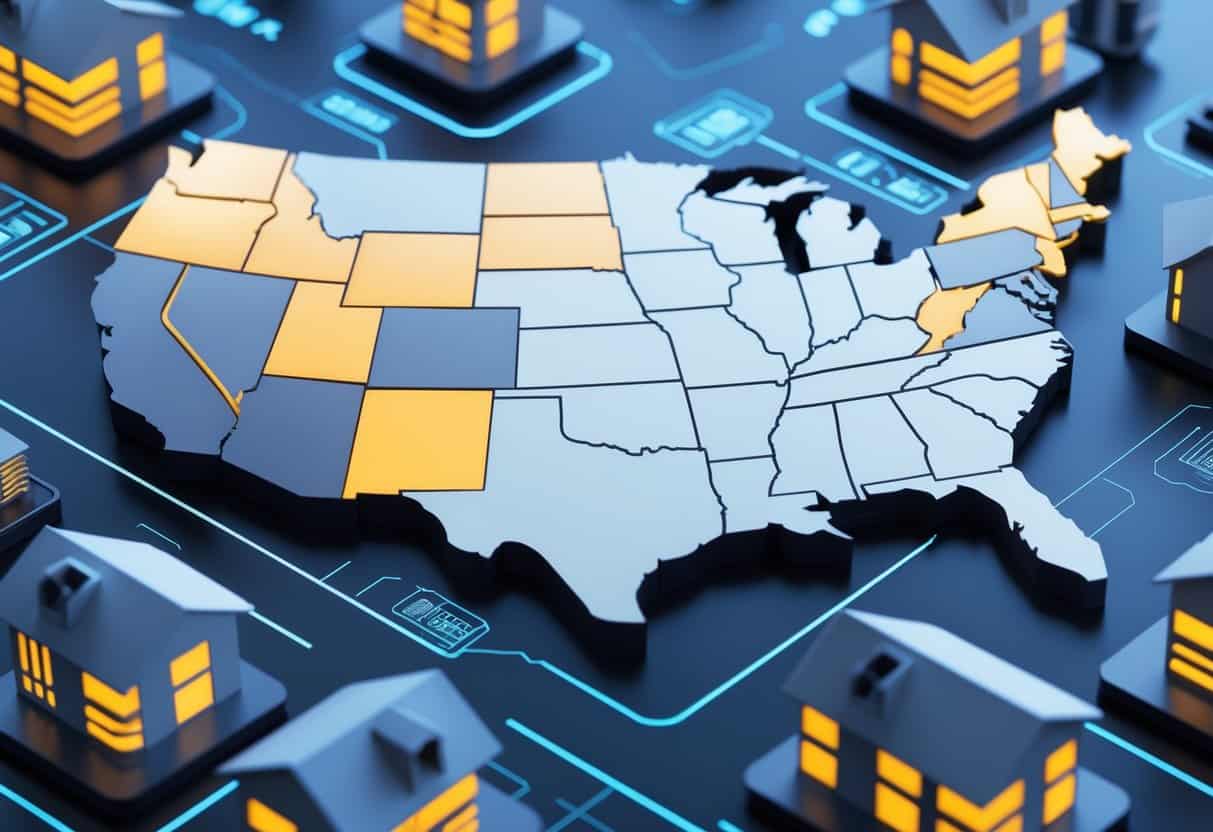3D-printed housing is shaking up how homes are built in the United States. Texas and California are out in front, using advanced 3D printing to make homes that are both affordable and quick to build.
These new approaches are helping address housing shortages while cutting construction costs. It’s a shift that’s hard to ignore.

In Georgetown, Texas, entire neighborhoods of 3D-printed homes are springing up. California has even approved fully code-compliant 3D-printed houses that meet strict building standards.
It’s pretty wild to see how these partnerships and tech advances are opening new doors for housing. Makes you wonder how soon this will be the norm everywhere.
This technology isn’t just about building fast. It’s about making homes more accessible, especially where affordability is a struggle.
Key Takeways
- Leading states use 3D printing to address housing shortages.
- Tech advances come through partnerships and innovation.
- Faster building cuts costs and supports community growth.
Pioneering States in 3D-Printed Housing Innovation
Some states are clearly ahead when it comes to using 3D printing for affordable, sturdy, and quick-to-build homes. Their goals vary—some focus on big projects, others on sustainability, and some on disaster resistance.
Texas: Breaking Ground with Large-Scale Projects
Texas is leading with some of the largest 3D-printed housing projects out there. The state backs companies aiming to build entire neighborhoods with this tech.
This cuts building time from months to, honestly, just days. Austin and Houston have seen pilot projects where homes are printed, layer by layer.
These projects lower costs and open up new housing options. Texas encourages partnerships between builders and tech firms, which really helps scale things up fast.
If you’re in Texas, don’t be surprised if you see more of these 3D-printed communities popping up.
California: Advancing Sustainability and Regulations
California’s focus is on eco-friendly 3D-printed homes. The state supports innovations that reduce waste and use greener materials, like concrete with recycled content.
They’re also working on clear rules for 3D-printed construction. That way, builders can follow safety and quality standards without getting bogged down.
Silicon Valley’s research centers and startups are pushing this technology forward. These efforts make sure the homes are green, safe, and—crucially—affordable for more people.
Florida: Expanding Disaster-Resilient Solutions
Florida is all about using 3D printing to make homes that can stand up to hurricanes and floods. Builders use strong, lightweight materials that hold up better in bad weather.
Communities in storm-prone areas are testing these homes now. The quick build time lets you replace damaged houses faster after disasters hit.
Florida’s approach is about resilience and efficiency. If you live there, 3D printing might soon mean safer, more durable housing that actually protects your investment.
Key Technological Developments and Partnerships
The progress in 3D-printed housing really depends on new building methods, strong partnerships with innovative companies, and research from universities. These pieces all work together to create homes that are faster, cheaper, and more sustainable.
Innovative Construction Techniques
Large-scale printers are used to build walls and other structures, one layer at a time. This approach cuts down on waste and speeds up the process compared to old-school construction.
Some companies mix materials right on site, which harden quickly and let them print houses in just a few days. That kind of speed makes homes more affordable and durable in places like Alaska or California.
There’s also a push for printable concrete blends and bio-based materials. These lower the environmental impact and improve insulation and strength. It’s a pretty big deal for making 3D-printed houses practical.
Collaboration with Tech Startups
Homebuilders are teaming up with tech startups that specialize in 3D printing. These companies bring expertise in printer design and construction automation.
One standout example: a major homebuilder working with a 3D printing firm to scale up house construction. This kind of teamwork lets them prototype faster and bring new models to market.
Startups like Apis Cor are making printers that can be used right on site, cutting transportation costs. These partnerships help builders offer homes more quickly and at lower prices.
Universities Driving Research
Universities play a big role by testing new materials and printing methods. Their research centers often develop innovations that industry partners can use.
For example, one university built the first 100% bio-based 3D-printed home. It proved you can make fully sustainable houses with renewable resources.
Academic research digs into the durability, energy efficiency, and environmental benefits of these homes. It also helps train the next generation of pros in this field.
Impact on Housing Affordability and Community Development
Communities using 3D-printed homes are seeing lower building costs, quicker project completion, and better access to housing. These changes can make it easier to find affordable homes and help local areas grow.
Reducing Construction Costs
3D printing slashes labor costs since machines do most of the heavy lifting. Fewer workers are needed, and less time gets wasted on mistakes.
Materials get used more efficiently, too, so there’s less waste during construction. Concrete, which is often used, offers better insulation—so you’ll probably save on heating and cooling bills over time.
All this adds up to making homeownership or renting more doable for more people.
Accelerating Project Timelines
Building a home with 3D printing can take just days instead of weeks or months. That means you could move in much faster, which is huge in places where housing is scarce.
Shorter timelines let construction teams finish more projects each year. With quicker builds, you might see new homes and neighborhood improvements more often, giving communities a real boost.
Enhancing Community Access
3D-printed homes can actually be built in rural or underdeveloped areas, where traditional construction might be expensive or just plain slow.
If you live outside the city, this really opens up your options.
Affordable, energy-efficient homes tend to attract new folks and help keep costs down for people already living there.
It’s a chance to join a neighborhood that encourages growth and sustainability, but you don’t have to give up quality or comfort to get it.
